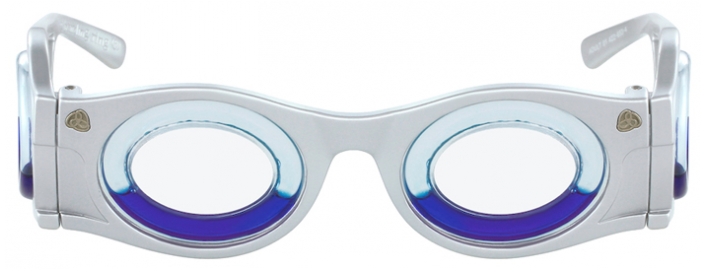

For the folks in the latter camp, it’s not that they don’t want to be productive while traveling, but rather, they physically can’t. One of the most popular, a motion sickness band, is based in acupressure, and provides sustained pressure to a point below the wrist that relieves nausea symptoms for as little as $12, though the Food and Drug Administration urges caution against online purchases of medical devices said to prevent motion sickness.There are two types of people in the world those who can read and accomplish work while on the go, and those who can’t. The glasses retail for about $116, steeper than most other methods of travel sickness prevention.
#Motion sickness glasses boarding technology tv#
Kids often watch TV in the backseat or play on-screen games, which may raise their risk of travel sickness, though they usually grow out of severe symptoms once their brains develop. Staring at a fixed object on a smartphone or tablet while a car is in motion can produce the same result, and children are most susceptible, Dr. "It's a natural response to an unnatural environment," cognitive psychologist Cyriel Diels told the Times. And when the body sees motion it does not feel, it prompts a queasy response, The New York Timesreported. Digital motion sickness, or cybersickness, creates that same dissonant response in the brain that leads the body to believe it's in motion, this time after watching moving digital content. Other common motion sickness curatives, like dimenhydrinate (sold as Dramamine) and ginger root pills were considered "least effective" in preventing illness by the study's authors.Ĭitroën designed the glasses with a particular version of the malady in mind. The phenomenon can also produce drowsiness, stomach fullness and cold sweats, preventable with doctor-prescribed scopolamine. Motion sickness almost always manifests in nausea, but severity ranges from "vague malaise to completely incapacitating," researchers wrote in a 2014 paper. This aligns the senses and alleviates the confusion, and symptoms should subside about 10 to 12 minutes after the user wears the goggles, which they can remove once their symptoms pass. The four-ringed glasses (two around the eyes, two sitting on the temples) are filled with a blue liquid that moves front-to-back and right-to-left as a car, train or boat moves to create an artificial horizon, according to Boarding Ring, the company that developed the technology. The vestibular system in the inner ear detects the vehicle's movements and send signals to the brain to maintain balance in what it perceives to be motion, but since the body isn't moving, these mixed signals elicit a stress response. Motion sickness results from discordant sensory input when the brain believes a stationary body in a moving vehicle is moving, too. On July 7, Citroën launched its "Seetroen" travel glasses, hailed "the end of motion sickness in minutes," which alleviate nausea caused by conflicting brain signals about the body's perceived motion, a common reaction to riding in cars or prolonged exposure to moving digital content. A French car company thinks its latest venture-a peculiar pair of lensless glasses-can cure 30 million Europeans' chronic motion sickness.


 0 kommentar(er)
0 kommentar(er)
